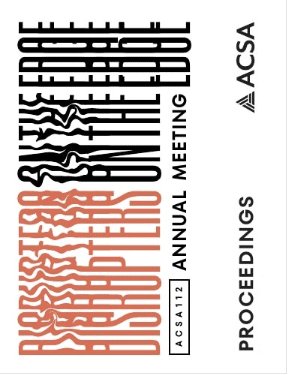Author(s): Nesrine Mansour
This paper examines the integration of Midjourney AI in architectural education, aimed at navigating digital pedagogy. By reviewing a case study from an Architecture studio, the paper seeks to understand the benefits, challenges, and ethical implications of embedding AI technologies in architectural learning. Traditional architectural education has primarily focused on design principles, technical skills, and historical context. However, introducing AI presents an opportunity to expand the pedagogical scope, enabling students to engage with emerging concepts and techniques. A Design/ Research studio, titled “The Sacred in Between: Architectural Explorations of Sacred Spaces,” enabled students in exploring the concept of “the sacred” through digital and physical artifacts, employing AI as a novel tool. Utilizing Midjourney AI, students synthesized relevant readings and discussions to create imagined scenes, with an extensive array of images aiding the initial design process. Additionally, reflections on encounters with AI spurred a class debate on AI’s influence on architectural education and the profession. A core discussion emerged around the potential decrease in human agency and creativity due to an overreliance on AI, which may lead to a standardized design approach, thus inhibiting individual expression and innovation. The ethical dimension of integrating AI into the curriculum was also explored, with concerns regarding authorship. Advocacy for a critical understanding of AI’s social and ethical implications was emphasized. The incorporation of AI in architectural education opens avenues for curriculum diversification, design exploration, and interdisciplinary collaboration, especially in a digital-centric society propelled towards the Metaverse. However, preserving human agency, addressing ethical issues, and equipping students for a dynamic professional landscape are imperative. This integration encourages architectural institutions to empower students in navigating complex design challenges amid rapid technological changes, urging a re-evaluation of architecture’s manifestation in digital realms as discourse increases in this domain.
https://doi.org/10.35483/ACSA.AM.112.24
Volume Editors
Germane Barnes & Blair Satterfield
ISBN
978-1-944214-45-6

 Study Architecture
Study Architecture  ProPEL
ProPEL 
